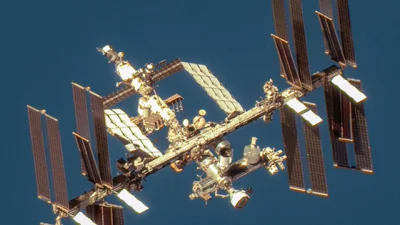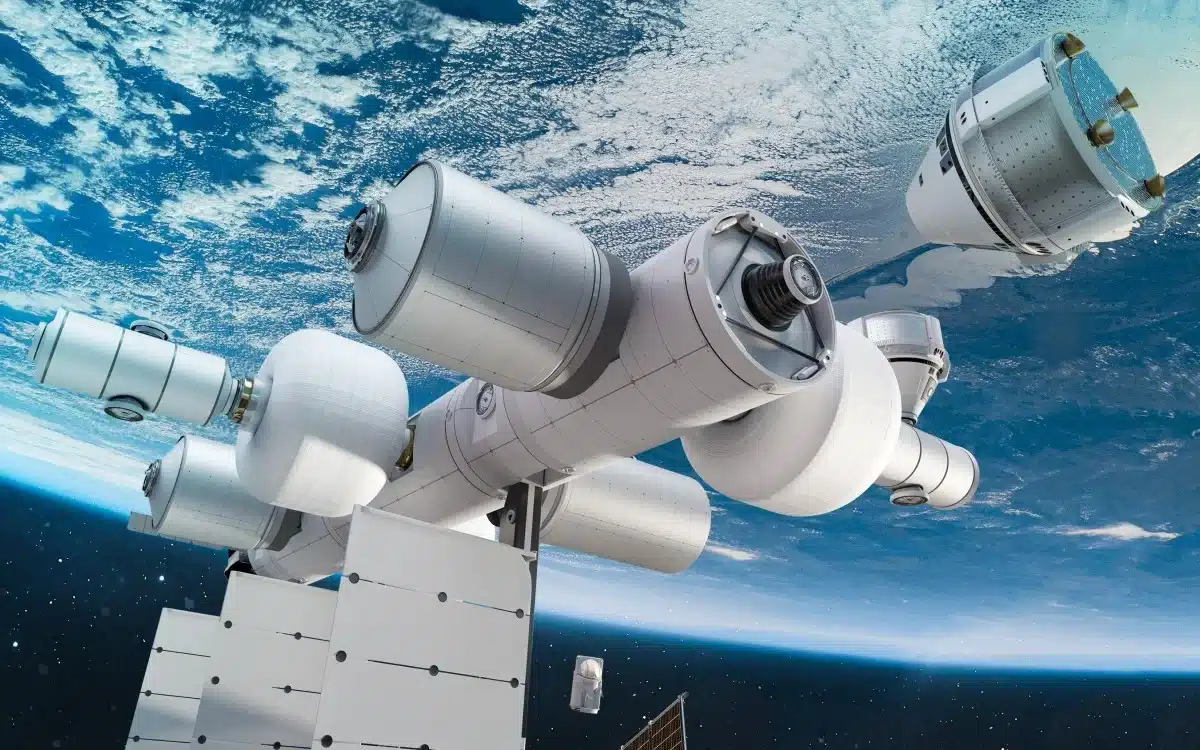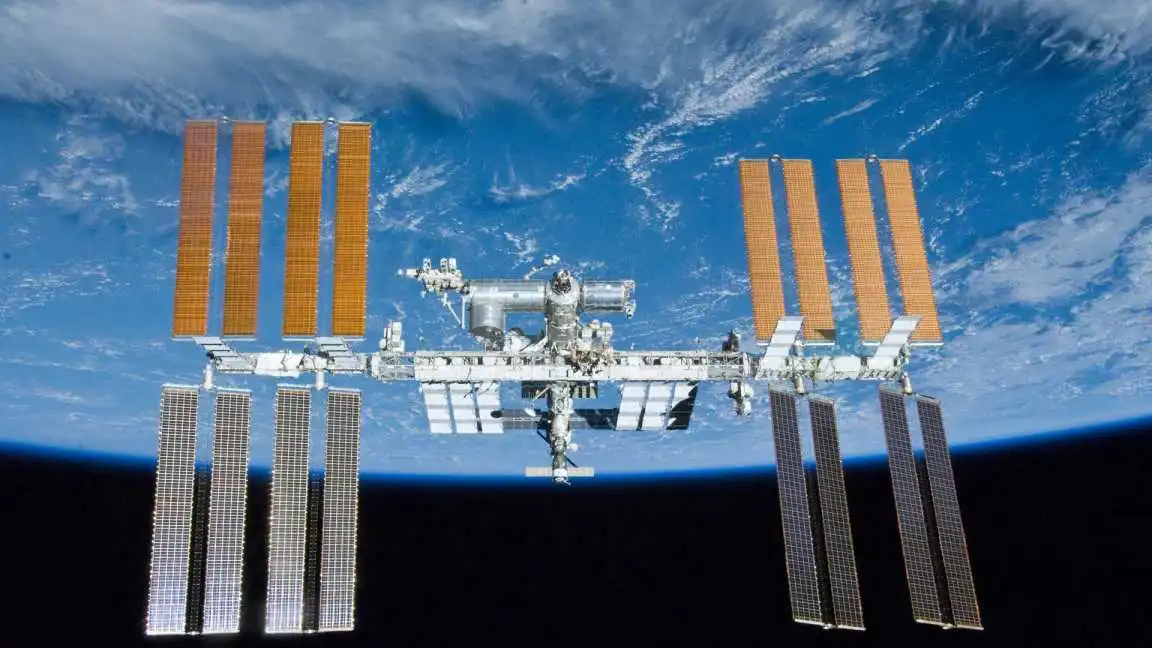The world will watch in a real sense as SpaceX handles potentially what may be its most noteworthy stakes try to date: securely obliterating the dearest Global Space Station. SpaceX has won the option to handle a stupendous errand: obliterating the Worldwide Space Station (ISS). The destruction will push the notorious and colossal station down through Earth's air in a blazing showcase. Furthermore, on the off chance that anything turns out badly, a fountain of trash could descend upon our planet's surface.
Considered and implicit a post-cold-war organization with Russia, the ISS, as so many of NASA's significant ventures, has endured far longer than its underlying plan life of 15 years. Nothing endures everlastingly, in any case, particularly in the cruel climate of space.
The ISS is maturing, and for the good of wellbeing, NASA expects to burn the enormous office around 2031. To achieve the work, the office will pay SpaceX up to $843 million, as indicated by a proclamation delivered on June 26. The agreement covers the improvement of an interesting deorbit vehicle to usher the inconvenient ISS to its destruction yet prohibits send off costs.

NASA has declined to give the quantity of recommendations got for the tasks. Right now, no insights concerning SpaceX's vision for the deorbit vehicle are freely known. Logical American connected with the organization yet didn't get a reaction by distribution.
What's reasonable is that SpaceX's current Mythical serpent and Starship space apparatus aren't great counterparts for the deorbit mission. That implies the organization could plan to intensely adjust one of these vehicles or to begin without any preparation and plan a specially constructed make.
Whatever the deorbit vehicle winds up seeming to be, SpaceX is taking on a sensitive specialized challenge. The ISS is maybe the most perplexing development project at any point executed and absolutely the biggest and most costly one in space.
Starting in 1998 its modules required 42 different send-offs to take off Earth. Furthermore, the circling lab contains probably as much interior space as a six-room house spread over an area the size of a football field. Weighing in excess of 450 tons, or what could be compared to almost three huge blue whales, the ISS is weighty, as well. Securely obliterating the space station seemingly will be much harder than collecting it.
The ISS ought to in any case have quite a while of science ahead. NASA has said it expects to work the space station through 2030 and that its accomplice space offices in Canada, Europe and Japan agree with that course of events. Russia's Roscosmos, which drives the ISS organization with NASA and works a few vital modules of the station, is presently just dedicated through something like 2028.

Be that as it may, why annihilate the station by any means? As a result of the ISS's extended and persistent residency, the last time Earth circle was dispossessed of people was in November 2000, not long before the appearance of Campaign 1.
When a NASA space traveler and two Russian cosmonauts started the station's most memorable residency. The notorious orbital station is presently a powerful image of the space age and of global joint effort in science that rises above international quarrels on The planet.
Without a doubt, some ISS fans contend it ought not be obliterated by any means rather they figure it ought to be helped up to a circle so high that it would stay in space perpetually as a demonstration of the designing ability of people.
That thought would be ridiculously unfeasible and restrictively costly, NASA says. Additionally, the lab is now delicate and will turn out to be always so the more it stays overhead. Eventually, it will begin breaking down and the more garbage it sheds, the more probable disastrous space garbage impacts could become in a startling criticism process that could shorten further movement in Earth circle.
A few nostalgic onlookers need to see portions of the station extracted unblemished and carried securely to Earth's surface, destined for a gallery, however that is similarly as strategically testing as a long-lasting ultrahigh circle, NASA says. Albeit the space station was gathered in circle, it wasn't intended to be dismantled, and no ongoing rocket has sufficient payload ability to convey ISS modules back to Earth.

NASA thought about different situations, as well: reusing the office in circle, giving its activity to private industry or in any event, blowing it to bits in space. All presented considerably grimmer possibilities, be that as it may.
So a searing destruction it is. Furthermore, the ISS will be sent down safely, given the difficulties of dismantling the station. In principle, that is a clean arrangement since Earth's climate makes rubbing that normally burns material going through.
Bigger items can endure the hellfire and tumble to Earth, be that as it may. Harm from falling space flotsam and jetsam is uncommon yet not unbelievable, as one Florida inhabitant took in the most difficult way possible recently, when an almost two-pound hunk of metal crashed through his rooftop.
The item was the remaining parts of a huge battery bed loaded down with trash that space travelers had casted off from the space station quite a while back for an "uncontrolled," not entirely set in stone. The property holder is presently looking for pay from the space office for the episode.
At the point when it was disposed of, the bed weighed around 5,800 pounds, as per NASA. Contrast that and the station's mass of around 925,335 pounds. A scope of variables shape, thickness, direction, climatic circumstances, and so forth decide the amount of an item endures reemergence.
An uncontrolled dive for something as massive as the Worldwide Space Station would be a horrible situation. Not exclusively would huge bits of the lab probably come to our planet's surface, yet the station would likewise presumably tumble and fall to pieces, making the cycle unusual. Also, an uncontrolled reemergence could rain garbage anyplace along the ISS's circle, which disregards around 90% of Earth's populace.
That is where NASA's agreement with SpaceX becomes possibly the most important factor. The business deorbit vehicle is intended to send off, join to the space station and afterward get it down through Earth's climate in a painstakingly arranged, risk-limiting move.
This is what that could resemble. To start with, the ISS would utilize a mix of regular drag and, in the event that fundamental, its current motors to move to a lower circle, from the working level of around 260 miles to no lower than 205 miles above Earth. Then, at that point, SpaceX's deorbiting vehicle would send off, about a year prior to the station's arranged date with fate and keeping in mind that space travelers were still installed.
During that one-year lead time, the ISS's height would proceed to diminish, and the last occupant space travelers would withdraw for Earth leaving the station without human without precedent for 30 years. Contingent upon how rapidly the research facility was falling, the deorbit vehicle would direct a progression of consumes to pull the absolute bottom of the station's circle from around 155 miles to around 90 miles.

Around here of the air, the thickness of the air would imply that the station would have under a month left, regardless of whether NASA were to allow it to fall all alone. The ISS's capacity to consistently situate itself contrasted with Earth would likewise corrupt. By that point, the deorbit vehicle would have to apply an iron hold on the station's movement to forestall likely calamity.
Then, at that point, finally, the last push would be made. The deorbit vehicle would fire its motors for as long as an hour to push the ISS through the thickest, most hazardous lower layers of the environment.
The consume would be painstakingly planned to guarantee that the station and anything garbage it created fell across the meagerly populated southern Pacific Sea, the last resting place for the greater part of mankind's most unsafe orbital reject.
According to all through the whole undertaking, NASA, SpaceX's framework should have the option to effectively execute a controlled deorbit regardless of whether not one yet two part disappointments happen.

The agreement is one more illustration of NASA depending on SpaceX to execute basic work. The organization drove the way in shipping NASA space explorers to the circling research center and has assumed control over sending off a large group of missions for the office.
Also, it is four trips into testing the most remarkable rocket at any point flown, which is expected to be essential for NASA's complicated Artemis III mission to land people close to the moon's south pole as soon as 2026.
For the mission to obliterate the ISS, SpaceX should either considerably update a current vehicle or plan something altogether new — and quick. In spite of the fact that NASA trusts the deorbit vehicle won't have to send off until mid 2030, the organization knows that an unfortunate turn of events on the maturing station would require a scramble to fly the deorbit vehicle significantly earlier.
Furthermore, all through the mission, the entire world will in a real sense be watching. Flawless, the space station is now an eye-catchingly splendid divine sight, yet its flaring fall will be a burial service fire that will illuminate the skies a last blast of brilliance for the notable office and all its imagery.

